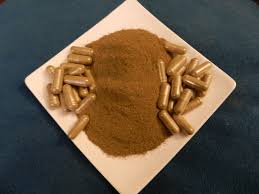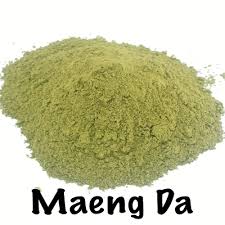In today’s world, a number of strategies are being employed to get rid of Opioids because of the harmful effects it has on the human body and brain.
Many of these strategies prove fruitful. You get rid of Opioid addiction but then you get addicted to the treatment drug.
A strategy that fully withdraws off from Opioids without causing any adverse effects is a strategy worth following.
This guide will explain withdrawing off of Opioids using Kratom. Kratom is a traditional herbal supplement that is finding its way in the medicinal arena.
Read this guide to understand the pharmacodynamics of Kratom and how it is similar to Opiates, thus becoming the best alternative to Opiates.
What is Kratom?
Kratom or Mitragyna Speciosa is a herbal supplement that has been used for centuries to treat pain, improve energy levels and elevate mood.
The active components of Kratom are alkaloids. They are more than 40 in number but the primary ones are 7-hydroxy Mitragynine and Mitragynine.
These two alkaloids act on the Opiate receptors present in the central nervous system. Opiate receptors are of three types; mu, delta, and kappa.
Kratom show agonism on these receptors. It attaches to the receptors to bring about a series of changes in the neuronal system.
The sympathetic system is activated at low doses. There is increased the release of dopamine and serotonin which act on the reward system to induce euphoria.
There is increased the release of enkephalins and endorphins that are important neurotransmitters in pain regulation. At higher doses Kratom induces sedation.
What are Opiates, opiate abuse, and withdrawal?
Opiates form a class of drugs that are known to cause physical as well as psychological dependence.
These drugs make you dependent on them and if you stop taking them you feel sick and you crave for it.
These cravings force you to take Opiates again and again which increase your dependence. Opiates also cause quick tolerance which means that you need to take an increased dosage of Opiates to have the desired effects.
Opiate withdrawal occurs when you suddenly quit the intake of Opiates. This is a condition in which you get certain symptoms that make you feel crippled.
These symptoms appear within 6-12 hours for short-acting Opiates and around 30 hours or more for long-acting Opiates.
Early symptoms of Opiate withdrawal syndrome include muscle aches, anxiety, agitation, insomnia, sweating, increased tearing, runny nose, yawning and fever.
These appear within 12 hours of the last usage of Opiates. Late symptoms start appearing within 72 hours and may last for a week.
These symptoms include abdominal cramps, diarrhoea, vomiting, nausea, dilated pupils, and goosebumps.
Why does withdrawal occur?
Opiates, when administered for a long duration of time, result in certain changes in the body. The body initially is receptive to Opiates.
Gradually, the intrinsic mechanism of the body gets it that there is an extrinsic supply of Opiates so the intrinsic formation of Opiates stops.
When there is the further administration of Opiates, down-regulation of Opiate receptors is observed.
The receptors become inactive and no more respond to the Opiates. Desensitization of mu, delta and kappa receptors forces the user/addict to take more and more Opiates to achieve the desired effects.
Dependence occurs when the body requires a continuous supply of Opiates to function normally.
This means that the body needs an extrinsic supply of Opiates to release dopamine that is one of the neurotransmitters responsible for the elevation of mood.
When the extrinsic supply of Opiates is stopped, these nerve cells stop functioning or malfunction and you start feeling the withdrawal symptoms.
How can Kratom help in Opiate withdrawal?
Kratom and Opiates act on the same receptors that are known as mu, delta and kappa receptors and both of these substances produce almost same effects.
The advantage of Kratom over Opiates is that Kratom doesn’t cause such severe addiction, dependence, and tolerance.
In fact, it relieves the withdrawal symptoms of Opiates by producing the effects and helping the receptors come back to normal.
Once Kratom reduces the withdrawal symptoms, it is gradually tapered and this is how one gets rid of the withdrawal symptoms of Opiates.
How long does Kratom take to eliminate Opiate withdrawal?
Opiate withdrawal in severe cases may last up to months if the treatment regimen is ineffective or the patient is not compliant.
The regimens that are employed for the treatment of Opiate withdrawal require patience and a lot of motivation to continue because the process of rehabilitation requires months.
In such cases, usually many patients revert back to the use of Opiates. Kratom for Opiate withdrawal can be the best option if it is included in the treatment regimen. Kratom for Opiate withdrawal considerably reduces the time span.
There is no time frame for Kratom to eliminate Opiate withdrawal as symptoms in each individual vary.
If the Opiate addiction is severe, you may require Kratom for a longer duration and if Opiate has been consumed via injections you will need to take Kratom for an extended time. The health of each individual is an important factor too.
Types of Kratom for Opiate Withdrawal
You can use some of the strains of Kratom for Opiate withdrawal which is mentioned below;
-
Bali blend
It is one of the best strains of Kratom for Opiate withdrawal. It is an analgesic and has sedative properties, helping with insomnia and other sleeping disorders.

-
Sumatra red Vein powder
This strain of Kratom is most effective for the removal of opiate cravings thus it should be included in the treatment regimen.

-
Maeng Da
This strain is known for its exciting activity. Maeng Da takes away the fatigue-related symptoms and energizes one. It produces euphoria, thus helping with saddening thoughts.

-
Green Thai Powder
Patients suffering from reduced libido or sexual dysfunction due to opiate withdrawal can take Green Thai powder.

-
Green Malay
Green Malay produces intense euphoria thus elevating mood. It also acts as an analgesic and helps one attain a relaxed state of mind and body.

What is the required dosage of Kratom for Opiate withdrawal?
Usually, it is recommended to take Kratom extracts for reducing the symptoms of Opiate withdrawal.
An extract of 15x to 30x strength has proved beneficial. The dose should be 75-100mg twice a day for around a week. If the symptoms subside, taper the dosage.
You can also take Kratom powder to get rid of the Opiate addiction. Start with a dosage of 2 grams and if you still feel the symptoms, increase the dosage to 4-5 grams.
Those with severe addiction may require a dosage of 9-10 grams, almost three to four times a day. Ensure that you do not use more than 30 grams of Kratom per day.
Continue this routine for 4 days and by day 5, start tapering the dosage. Day 5 onwards take a dose 5 grams or even lesser. By day 8 usually the symptoms disappear and thus you should taper the dose to less than 1 gram by this day.
What are the side effects associated with Kratom intake?
Some of the side effects that you’ll note with the consumption of Kratom for Opiate withdrawal include;
- constipation,
- drowsiness,
- nausea,
- abdominal cramps,
- a headache, and
- Fatigue.
Is Kratom addictive?
It is repeatedly mentioned in the article above to taper the dosage of Kratom and to avoid using high doses and for longer duration.
The reason being, that Kratom is mildly addictive too. Therefore, it is necessary to reduce the dosage after day 3 or 4.
If the dose isn’t tapered one may even get addicted to Kratom and suffer from Kratom withdrawal symptoms which are milder as compared to that of Opiates.
What alternate methods can I use for Opiate withdrawal?
- Exercise regularly.
- Use supplements and vitamins to maintain your health.
- Drink plenty of water.
- Use acupuncture for pain.
- The Hot water bath helps in relieving irritability and stress.
- Massages help in reducing muscle cramps and soothe the nerves.
What other supplements can be used for the withdrawal of Opiates?
The list below mentions the supplements that can be used for Opiate withdrawal other than Kratom;
- Kava kava– active ingredient kavalactones
- Phenibut
- Passion flower-active ingredient flavonoids
- 5-hydroxytryptophan
- Agmatine Sulphate
- Rhodiola Rosea
- N-Acetyl Carnitine
- Bacopa
- Ashwagandha
- Black Cumin Seed Oil
- Ibogaine Root
- Calcium and Magnesium
- B-Complex Vitamins
- Melatonin
When to contact a doctor?
If you are not getting better with Kratom or any of the above-mentioned supplements and your symptoms are worsening, it is the time that you visit your doctor and get immediately prescribed medication for your worsening condition.
You should also contact the doctor if you are severely dehydrated due to vomiting and diarrhoea.
Some of the symptoms of dehydration include dry mouth, extreme thirst, no urination, fever, disorientation, tachycardia, sunken eyes and rapid respiratory rate.
If you have any pre-existing health condition you should avoid taking Kratom and self-medication for Opiate withdrawal.
What is the bottom line?
Kratom for Opiate withdrawal is an effective treatment as it acts on the same receptors and produces similar effects without having any major adverse effects if used with caution.









